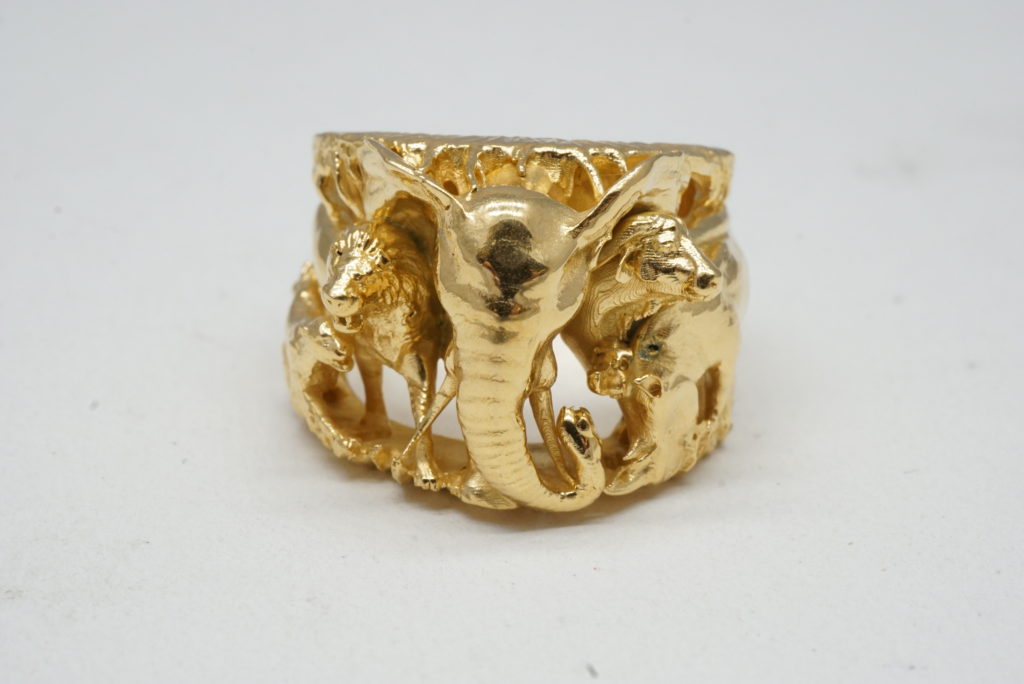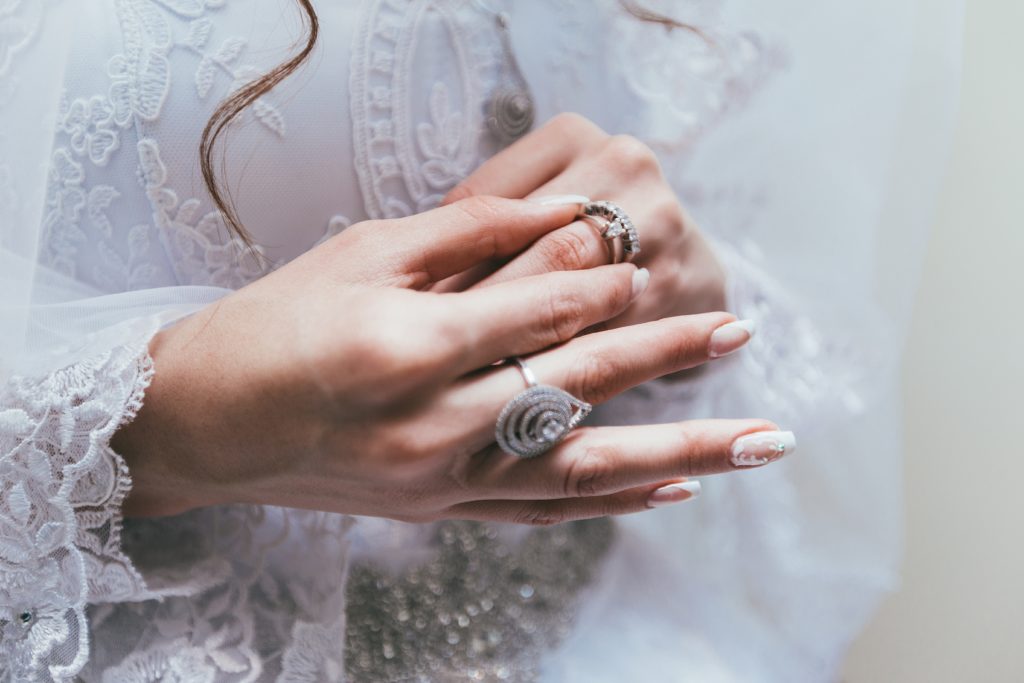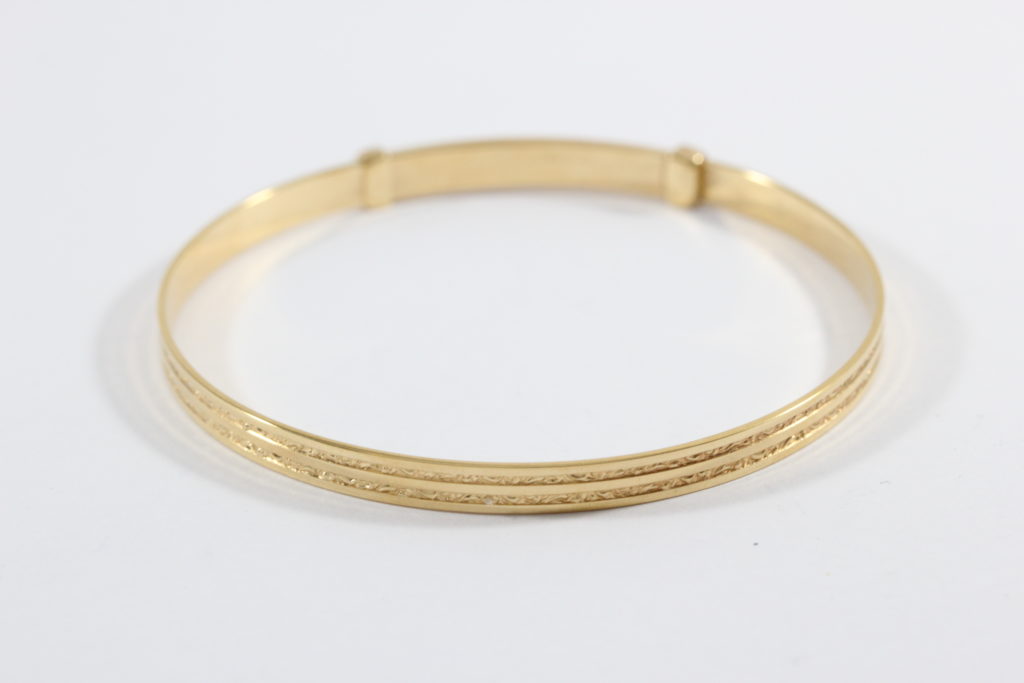How to Make Sure Your Gold Plating Lasts Longer
Written by Annabelle
October 14, 2019

Gold plated jewelry is a wonderful way to get the gold aesthetic without dropping an exorbitant amount of money. But because gold plating is simply a thin plating over the metal of the jewelry, it does wear away over time. We've come up with a few tips for you to extend the life of your gold plated jewelry.
What Exactly Is the Gold Plating?
Contrary to popular belief, gold plating isn't as easy as dunking an item into a molten gold bath like a fondue. It's a scientific process that involves a lot of chemistry; in simple terms, electricity is run through a tank of solution to fuse gold particles to the surface of your jewelry. The longer you leave the item in the tank, the thicker the gold plating.
That being said, gold plating is just a thin layer of gold on top of your item. While you can definitely increase the longevity of the gold plating by choosing to plate your item with a greater thickness, it's still comparable to a layer of paint on top of your jewelry. Over time, that “paint” is going to come off due to a variety of factors: friction from daily wear, chemicals from your skin and the air, and the nature of the metal underneath the gold. While this process is inevitable, here's what you can do to ensure that you're getting the most out of your gold plating.
5 Ways to Maintain Your Gold Plated Jewelry
1. Take it off: Don't wear your gold plated jewelry to bed! This can destroy chains such as necklaces and bracelets. In addition, the sweat and oils from your skin will affect the gold plating and the metal underneath the gold plating. Before you go to bed, just take it off and put it somewhere safe.
2. Wipe it down: Along those lines of taking it off and putting it away, make sure to wipe down your gold plated jewelry with a soft cloth before you store it. Just because you're no longer wearing the piece doesn't mean that it's free of the substances from your body; after all, it's been on you for a whole day of wear. Wiping it down gently will help to remove the oils, and it'll get rid of any strange odors that come from not cleaning your jewelry on a regular basis.
3. Don't shower with it on: Even if they're gentle enough for your skin, soaps and shampoos still contain chemicals that react badly with the gold plating and the metal underneath. In addition, humidity causes certain metals to tarnish. This means that the metal underneath the gold plating will change color, turning black, brown, or red. This tarnishing will seep through the gold plating and make your jewelry look like a corroded mess.
4. Don't clean with it on: If you're a ring or bracelet lover, take those pieces off before you decide to do your weekly house cleaning. Household cleaners are extremely strong and can wear down the gold plating quickly. In addition, friction caused by your hand coming into contact with surfaces will rub away the gold plating, especially if it's a thinner plating.
5. Don't swim with it on: Gold is well-known for being pure and near-incorruptible as a metal, but if it has one enemy it's chlorine. Dropping into a pool with gold plated jewelry will be the end of your pieces; the chemical literally eats into gold, leaving it with little “pits” in the surface. If it can do this to solid gold pieces, imagine what would happen to gold plated items!

A gold ring with pitting and tarnishing.
Things to Keep in Mind About the Jewelry's Original Metal
Not all metals are equal! Certain metals will affect the gold plating and its longevity.

An antique gold fill bangle that was replated after years of tarnishing.
- Sterling silver, copper, brass, bronze, and miscellaneous alloys: These metals will oxidize and tarnish over time; that means the metal will change color. There's no way to prevent this from happening- it's just how these metals are in terms of chemical properties. This tarnish will eventually come through the gold plating, and depending on your location the humidity of the climate and the chemicals in the air may cause this process to happen more quickly. At Quick Jewelry Repairs, what we do is add a layer of nickel or palladium before gold plating to help with this issue, but it's not a cure-all and the tarnishing will still occur. Keep this in mind if you plan to plate these metals, as they will need more care than other gold-plated metals.
- Stainless steel and white gold: These metals aren't prone to tarnishing, and they take gold plating well. That being said, you should still make sure to keep the jewelry away from any abrasive contact in order to preserve the coating.
Now you should be ready to keep your gold plated jewelry in good condition! Comment below if you have any questions.



Very informative thanks
I appreciate the information. When given sterling silver, gold plated over sterling silver….saying won’t tarnish, some dont, I’m happy I thought to ask, and now wont waste money. Thanks.
Really good information, thanks for letting me know all that as I didn’t know it..
Great info, appreciate you